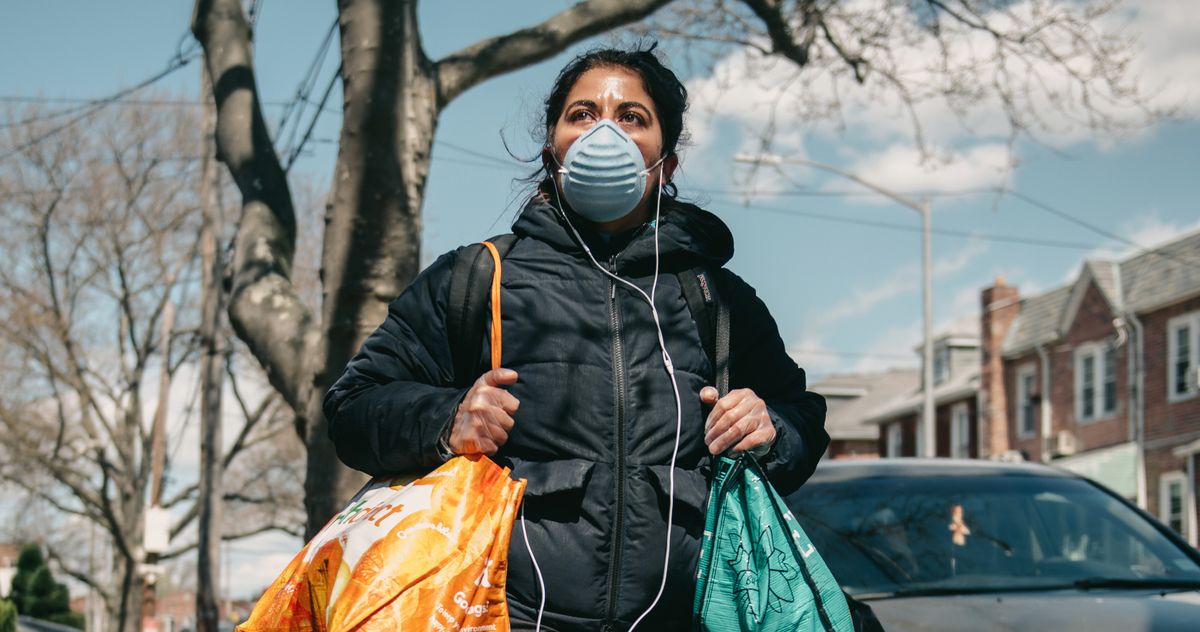So You Want to Get Involved in Mutual Aid - 5 minutes read
 There is a long tradition of mutual aid in the U.S., particularly within underserved communities. Photo: Scott Heins/Getty Images
There is a long tradition of mutual aid in the U.S., particularly within underserved communities. Photo: Scott Heins/Getty ImagesThe United States is a country of staggering disparities, many of which have been put in stark relief over the past year amid compounding crises. As the coronavirus pandemic has maintained an unrelenting grip on the country, Black and Latino people have been nearly three times as likely to contract COVID-19 than white people and twice as likely to die from the virus. Unemployment has soared to historic levels, rendering millions of people unable to afford food, rent, or other basic necessities. Meanwhile, more and more people are getting involved in organizing and activism amid a nationwide uprising sparked by racist police brutality.
Against this backdrop, where large swathes of the country feel abandoned by the government, the concept of mutual aid is quickly gaining mainstream recognition. Mutual aid is a form of solidarity-based support, in which communities unite against a common struggle, rather than leaving individuals to fend for themselves. While underserved communities have long organized mutual-aid networks, in the past year, the groups have proliferated across the country, and the concept has increasingly gained mainstream recognition. Neighborhood mutual-aid networks, such as Crown Heights Mutual Aid in Brooklyn, have cropped up to deliver groceries for people especially vulnerable to coronavirus. Meanwhile, existing mutual-aid groups like the For the Gworls, which supports the Black trans community, have received an influx of donations to provide rental assistance, funds for gender-affirming surgery, and more.
As mutual-aid groups have received increased attention, questions (and in some cases, confusion) have arisen: How do you get involved in mutual-aid efforts? And how does it differ from charity? Here’s a quick guide to what mutual aid is — and isn’t — plus steps to get involved.
What is mutual aid?
In mutual-aid systems, people work cooperatively to meet the needs of everyone in the community. It’s different from charity, which features a one-way relationship between an organization and recipients, and often responds to the effects of inequality but not its causes. Mutual aid is an act of solidarity that builds sustained networks between neighbors. As prison abolitionist Mariame Kaba explained to the New Yorker: “It’s not community service — you’re not doing service for service’s sake. You’re trying to address real material needs.”
While many neighborhood networks cropped up in response to the pandemic, mutual aid is not just a response to a crisis, but instead, a more permanent alliance between people united against a common struggle. In short, people offer help — which could be resources, like food or money, or skills, like driving or picking up prescriptions — which are then redistributed to those in the community who are in need. Mutual-aid systems operate under the notion that everyone has something to contribute, and everyone has something they need.
How long has mutual aid been around?
The term “mutual aid” comes from 19th-century anarchist Peter Kropotkin, who formulated the theory after going to the Siberian wilderness. Expecting to observe competition in the natural world, he instead witnessed animals united against common struggle. He later outlined his theory in his 1902 essay collection, Mutual Aid: A Factor of Evolution, writing, “In the long run, the practice of solidarity proves much more advantageous to the species than the development of individuals endowed with predatory inclinations.”
Throughout American history, wherever poor, marginalized communities have existed, often, so have mutual-aid networks. In the 19th and 20th centuries, “fraternal societies” within the labor movement — which were run by the poor and working class — provided access to health care, paid leave, and life insurance to people across the country. The Black Panther Party also organized a number of mutual-aid efforts in the 1960s, the most famous being its free-breakfast program, which provided meals to 20,000 children.
How do these systems operate?
Mutual-aid groups are made up of organizers and volunteers who respond to the needs of communities. How they achieve this logistically differs from group to group. Many of the mutual-aid groups that cropped up in response to the pandemic started in Google Docs and Slack channels, in which people came together to discuss how to support each other within the neighborhood.
Support comes in myriad forms. Bed-Stuy Strong in Brooklyn, which started in response to the pandemic, has recently been cleaning the neighborhood and posting flyers encouraging the community to fill out their census forms. During the Black Lives Matters demonstrations that erupted across the country this summer, networks provided snacks and supplies to protesters. Also this summer, the grassroots collective The Okra Project created emergency mutual-aid funds to help Black trans people pay for therapy sessions with licensed Black therapists.
How can I get involved in mutual-aid efforts?
Unfortunately, there isn’t currently an extensive database that outlines all the mutual-aid efforts across the country. Instead, you’ll likely have to spend some time digging around on Google or social-media platforms to find local efforts. You could also reach out to local community organizers for guidance. It’s up to you how to support the efforts: You could give money, which is a great way to support national networks, or you could volunteer your time. Depending on your level of involvement, you might be instructed to attend a quick orientation or meeting. Crown Heights Mutual Aid, for example, offers twice-weekly trainings over Zoom, every week.
You could also take the initiative to create a new mutual-aid network to respond to an unmet need. In response to the pandemic, Representative Alexandria Ocasio-Cortez and Kaba compiled an incredibly useful, comprehensive guide to mutual aid, including information on how to start a network.
Source: The Cut
Powered by NewsAPI.org